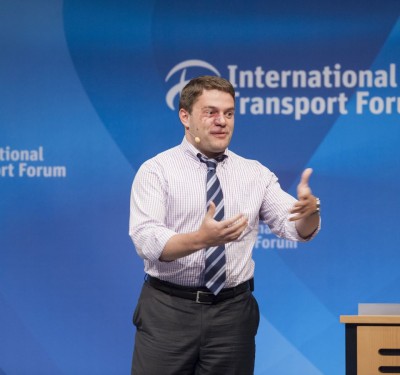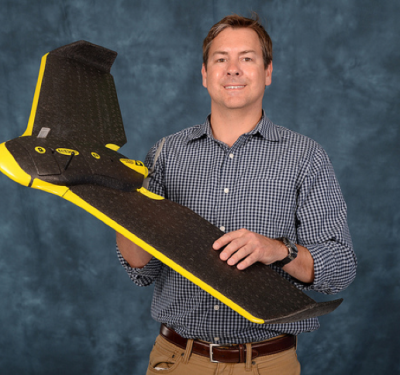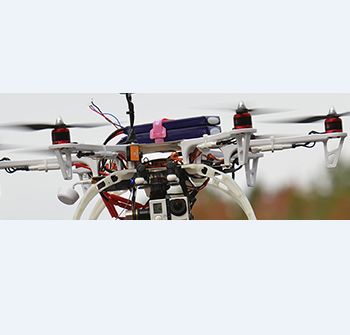Amsterdam Drone Week stands as a premier global forum for exchanging insights into existing air solutions, prospective innovations and critical regulatory matters. This year’s event, held between April 16-18 at the prestigious RAI Amsterdam, attracted over 3200 representatives from a diverse group of global major commercial and non-commercial stakeholders who gathered to collaboratively discuss the strategies needed to scale drone and air mobility services. The theme: global harmonization of regulation and infrastructure. Here are a few of the key takeaways.

Federal Aviation Administration (FAA)
Throughout the event, Jeffrey Vincent, Executive Director Integration Office at the Federal Aviation Administration (FAA), outlined several key U.S. initiatives in drones and AAM. The FAA has adopted what he referred to as “a scaled approach to construct an information-centric system,” for these industries.
The agency has plans underway to address beyond visual line of sight (BVLOS) operations, aircraft certification and third party services for UTM within Its regulatory framework. On the latter subject, he said to expect a NPRM (Notice of Proposed Rulemaking) by the end of this year on BVLOS operations.
In the meantime, to maintain safety levels equivalent to crewed aviation within the drone and eVTOL ecosystem while taking an operations-first approach, the FAA has recently published exemptions for drone infrastructure inspections and package deliveries. Vincent stated that several companies have successfully replicated these efforts to boost their own operations.
With regard to UTM, Vincent, along with Huy Tran, Director of Aeronautical Research at NASA Ames, noted that both of their organizations continue to prioritize UTM. They pointed to operational evaluations set to begin this August at the Dallas-Fort Worth “key site” area as evidence of this. Both experts emphasized that these evaluations should not be considered research and development (R&D) but, rather, real world ops. assess strategic deconfliction utilizing both detect and avoid (DAA) and ground-based systems.
On the topic of eVTOL aircraft, Vincent said the FAA aims to certify the first electric vertical takeoff and landing (eVTOL) by 2025. This first aircraft (note: the manufacturer was not revealed) will have an onboard pilot. However Vincent noted that these operations will rapidly shift towards increased levels of autonomy, which regulation will also need to address.
Beyond aircraft certification, Vincent also acknowledged the need to create a holistic ecosystem for advanced air mobility (AAM), in the form of vertiports, charging stations and regulation to address levels of automation. This will take a “comprehensive whole of government approach,” he said.
As for what’s next, besides a potential BVLOS NPRM, UTM operational evaluations and an eVTOL certification, expect to see some refined flight rules, a possible Air Traffic Management (ATM) framework and the attainment of milestones as outlined in the AAM (I-28) Plan, as the FAA continues to shape the future National Airspace System (NAS).
U.S. Takeaways
- FAA BVLOS NPRM – NLT Dec 2024
- Dallas UTM Operational Evaluations – start Aug 2024
- 1st U.S. eVTOL Aircraft Certification – projected for 2025
European Union (EU) | European Union Aviation Safety Agency (EASA)
Joachim Luecking, DG Move, provided an update on the EU Drone Strategy 2.0. Adopted in November 2022 by the European Union Aviation Safety Agency (EASA), the strategy focuses on five key objectives: enhancing airspace capabilities, facilitating aerial operations, developing Advanced Air Mobility (AAM), ensuring social acceptance and sustainability, and promoting the human dimension of drone technology.
Recent advancements include changes to Single European Sky Regulations (SERA) and Air Navigation Services (ANS) rules to support the airspace objective, with a focus on certified category rules and regulations applicable to eVTOL aircraft.
Luecking noted that the civil and defense sectors are collaborating on funding, demonstration, and testing initiatives for Counter-Unmanned Aircraft Systems (CUAS) capabilities, which he believes are crucial to social acceptance. Ongoing efforts involve substantial funding for the SESAR Joint Undertaking, facilitating the development of civil and defense testing centers.
On the issue of enhancing airspace capabilities, Luecking pointed to the adoption of the USPACE framework in 2021, which became effective in 2023. It necessitates member states to identify areas for U-Space (UTM) services and urges them to implement regulations in line with U-Space requirements. He noted a lag in implementation by member states and called for accelerated action, both from industry players to commence operations and from member states to enact regulatory frameworks. Luecking said this public-private collaboration will foster a “virtuous cycle” where industry demand catalyzes governmental support to advance the foundation for U-Space within each member state. “Work is progressing,” he said, “but more needs to be fairly done.”
On that note, separately, Volocopter and several aviation officials briefed that the company would be doing limited operational evaluation flights during the Paris Olympics, revolving around simulated medical deliveries. A pilot would be onboard with no passengers during these point-to-point flights. The company’s Volocity aircraft has not yet been certified. They expect movement on this, and additional flights in Europe, towards the end of 2024.
EU Takeaways
- U-Space Regulation – published 2021, effective 2023, not implemented
- Drone Strategy 2.0 – adopted 2022, implementation in progress
- Paris Olympics Limited Volocopter eVTOL Flights – summer 2024
Joint Authorities for Rulemaking on Unmanned Systems (JARUS)
JARUS, comprising 66 members alongside EASA and EUROCONTROL, crafts technical recommendations that empower its members to formulate their own guidelines, fostering harmonization within the drone industry.
Through its four Working Groups, JARUS has championed an operations-centric and risk-based approach. This resulted in categorizing drone operations into open, specific, and certified categories. JARUS harmonized some of the requirements through the Specific Ops Risk Assessment (SORA) methodology.
According to Giovanni De Antonio, JARUS Chair, SORA 3.0 discussions remain underway. He said to expect a forthcoming update to Annex H, which will specifically explore how UTM and U-Space airspace can be effectively integrated into existing regulatory frameworks.
On the other hand, De Antonio also said that JARUS only just began to initiate discussions regarding the establishment of groups dedicated to UTM or ATM functionalities.
However, JARUS has remained proactive in advancing UAS autonomy and automation. It developed a comprehensive methodology for assessing automated operations and determining the appropriate level of autonomy for UAS based on safety and dependability considerations. De Antonio noted that JARUS released a white paper aimed at analyzing the essential components required for a digitized airspace environment, including digital flight rules, ground infrastructure and other key elements.
The next JARUS meeting will take place in Kazakhstan, one of JARUS’s newest members (as of July 2023), from May 13 to 17, 2024.
JARUS Takeaways:
- JARUS White Paper on Automation of Airspace – Feb 2024
- JARUS SORA 3.0, Annex H Amendment – imminent
- JARUS Plenary Meeting – May 13-17, Kazakhstan
International Civil Aviation Organization (ICAO)
Michelle Merkle, Director of the Air Navigation Bureau at the International Civil Aviation Organization (ICAO) and the United Nations, provided updates on the collaborative efforts in aviation safety and global harmonization. With 193 member states, ICAO focuses on developing standards and recommended practices to ensure the safety, sustainability and security of global aviation systems.
Merkle highlighted the significance of building a global regulatory drone and AAM framework together. ICAO has made progress in establishing Standards and Recommended Practices (SARPS) for Remotely Piloted Aircraft Systems (RPAS) for the certified category, including internationally under instrument flight (IF) conditions in controlled airspace and aerodromes. She said regulations addressing areas crucial to integrate RPAS into conventional aviation, such as RPAS licenses, airworthiness criteria and provisions for command and control (C2) links are “already done.” Part 4 has also been added to Annex 6 of the Chicago Convention, to address the international operations of drones.
ICAO also supports national authorities and industries by providing regulatory guidance and training courses. It recently created an implementation package (iPack) to assist civil aviation authorities (CAAs) intended to promote drones in their countries.
Recognizing AAM as a priority, ICAO has formed an AAM Study Group, tasked with crafting the vision and framework for AAM. Merkle said her team plans to hold the first-ever AAM Symposium on Montreal from Sep 9-12. Merkley agreed with the U.S. perspective that the integration of technologies like eVTOLs, vertiports, and automation, requires collective action.
ICAO Takeaways:
- ICAO AAM Study Group – underway
- ICAO AAM Symposium – Sep 9-12, Montreal






